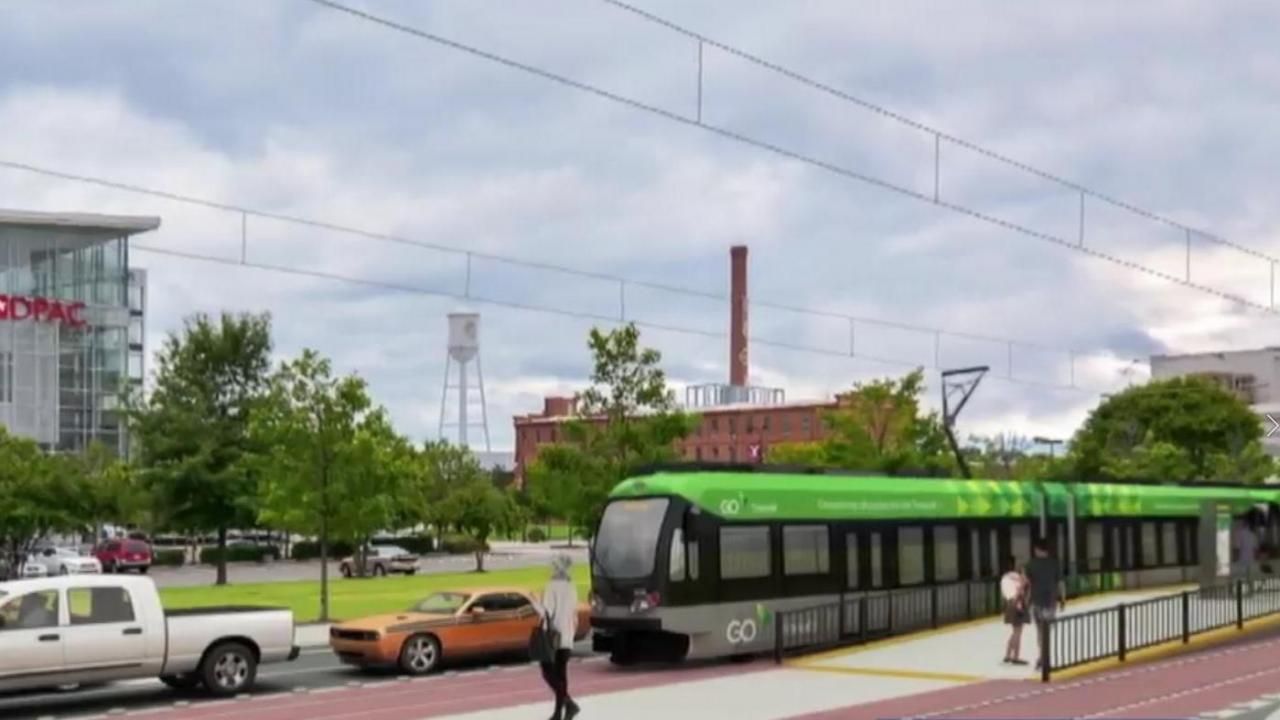GoTriangle report details spending of $157 million on failed Durham-Orange light rail

The Durham County Commission heard from GoTriangle leaders on Monday afternoon about why it cost $157,043,612 for the now-defunct Durham-Orange Light Rail project.
During Monday’s work session, commissioners told GoTriangle President Charles Lattuca, GoTriangle Chief Development Officer Katharine Eggleston and GoTriangle Chief Financial Officer Saundra Freeman that the report was years in the making.
“Thank you for finally getting [this report] to us,” Commissioner Nimasheena Burns said.
Burns explained her frustration that not a single spike, piece of dirt or railcar came as result of the spending from the defunct project.
“I’m not upset as Commissioner Burns,” Burns said. “I’m upset as a resident of the Triangle.”
Commissioners said the spending caused some in the community to question how their tax dollars are being spent.
Durham County documentation showed $130,922,132 went toward the management and design of the proposed light rail project. Most of the management and design expenses came from four major consulting contracts, which the GoTriangle Board of Trustees approved.
- URS/AECOM was the Project Development Consultant (PDC). PDC expenses totaled $26,722,828.
- DR was the General Engineering Consultant (GEC). GEC expenses totaled $86,775,632.
- HNTB was the Program Management Consultant (PMC). PMC expenses totaled $12,065,515.
- Gannett-Fleming/WSP joint venture was the Construction Management Consultant (CMC). CMC expenses totaled $3,278,526.
In April 2017, the cost-share for the entire project was renegotiated to 81.5% for Durham County and 18.5% Orange County. The initial cost-share was 77% for Durham County and 23% for Orange County.
Freeman explained how the plan was to get the Federal Transit Administration to pay for 50% of the proposed rail project via a grant. She said how GoTriangle leaders met with FTA representatives daily, weekly and monthly depending on the needs of the project. The origins of the project date back to May 2008, Freeman said.
“At the time the project was canceled [in March 2019], we were nearing the completion of the engineering phase,” Freeman said.
The FTA would have provided funding for its part of the agreement when construction started, Freeman said. But that never happened.
In 2009, the now-defunct line was included in the Durham-Chapel Hill-Carrboro Metropolitan Planning Organization’s 2035 Long Range Transportation Plan. The group also included the proposed Durham-Orange Light Rail in the 2040 Metropolitan Transportation Plan.
On Monday afternoon, commissioners also said they want GoTriangle leaders to learn from defunct rail line when considering the proposed commuter rail that would connect Durham and Clayton. In April, Lattuca estimated 12,000 people per day would ride a proposed 43-mile, 15-station system between the two cities.











